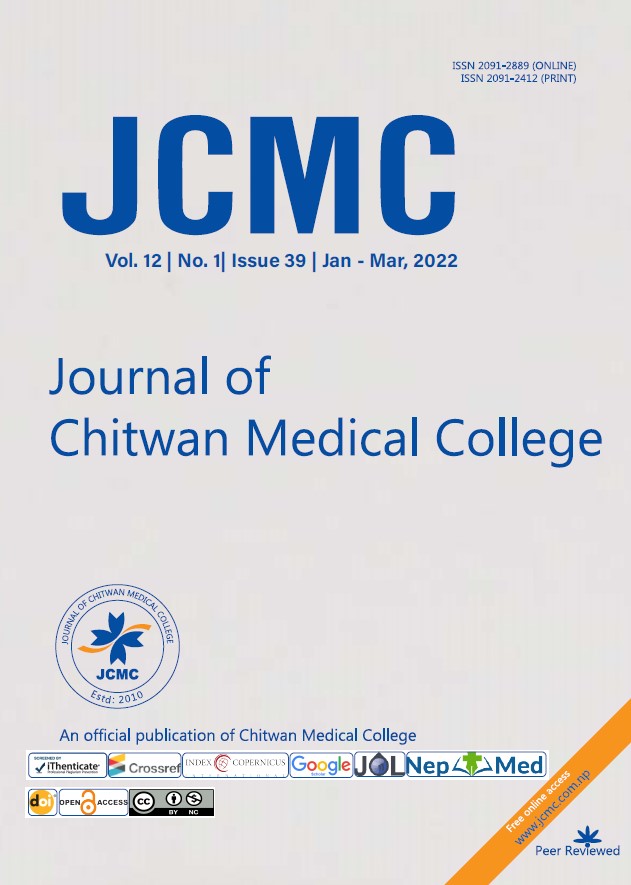Comparison of total serum bilirubin and transcutaneous bilirubin in neonates with hyperbilirubinaemia
Keywords:
Jaundice; Neonate; Serum Bilirubin; Transcutaneous bilirubinometer.Abstract
Background: Jaundice is considered as one of the most prevalent and common clinical problems during neonatal period which may require interventional treatment. Transcutaneous bilirubinometry is a simple method for estimating bilirubin levels and diagnosing jaundice in neonates. This study was done to compare transcutaneous bilirubin and total serum bilirubin in jaundiced neonates.
Methods: A hospital based prospective cross-sectional study of neonates from Out Patient Department, Emergency Ward, and Neonatal Intensive Care Unit with clinical jaundice was conducted between January 2016 and December 2016, at Kanti Children’s Hospital, Maharajgunj, Nepal. A total of 162 neonates were interviewed using preformed questionnaires. Then the correlation between the transcutaneous bilirubin and plasma bilirubin level was assessed by linear regression analysis. It was then analyzed with the help of SPSS Version 20. p-value <0.05 was considered statistically significant.
Results: Out of 162 cases, 61.7% were males and 38.3% were females. There was a high correlation between TcB and TSB level in neonates (r = 0.981) and this finding was statistically significant (p-value<0.001). Correlation coefficient of 0.98 and 0.97 were found in term and preterm neonates respectively, which suggested strong correlation between TcB and TSB in both groups of neonates.
Conclusions: Transcutaneous bilirubin measurement can be considered as a suitable tool for predicting neonatal bilirubinemia as it has high sensitivity.
Downloads
Downloads
Published
How to Cite
Issue
Section
License
Copyright (c) 2022 Sandeep Shrestha, Binod Man Shrestha, Bina Prajapati

This work is licensed under a Creative Commons Attribution 4.0 International License.




